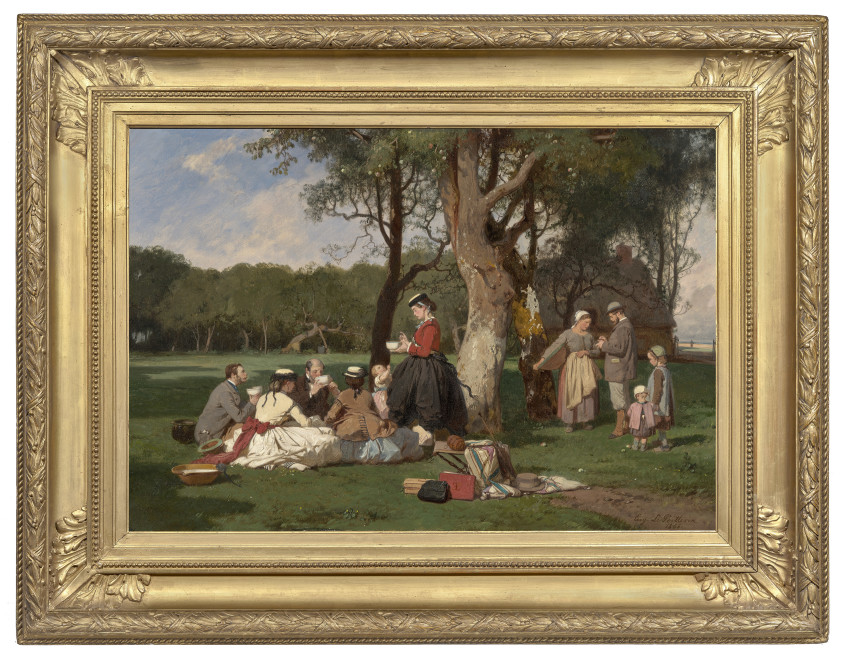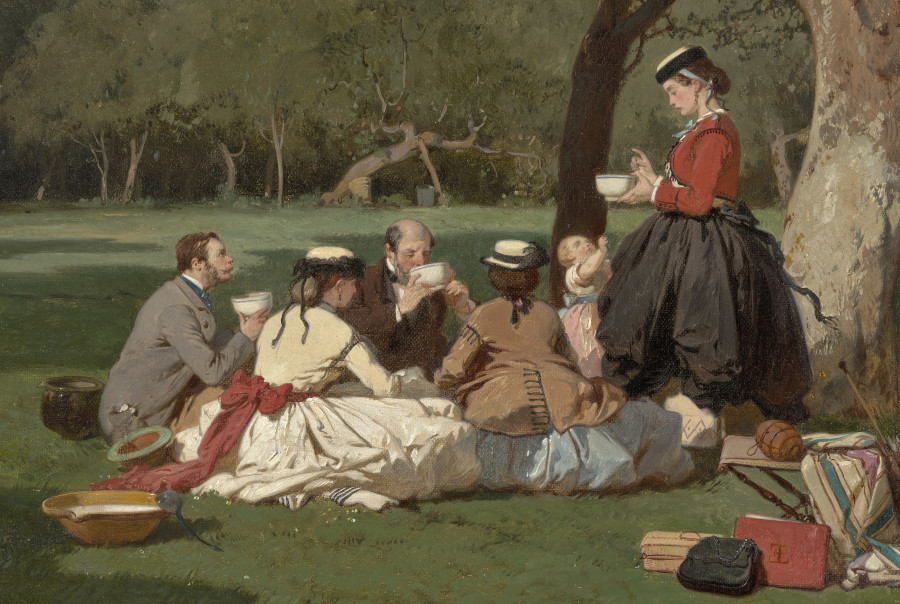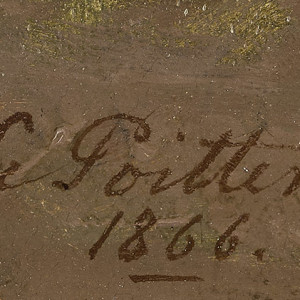Painted in the coastal town of Étretat, France, Eugène Le Poittevin’s work alludes to Claude Monet’s famous painting, Déjeuner sur l’herbe, painted in the same year.
Provenance
Private collection, France
Exhibited
Fécamp, Musée des pêcheries, L'invention d'Etretat : Eugène Le Poittevin, un peintre et ses amis à l'aube de l'impressionnisme, 14 July-15 November 2020, no.71, p. 74 (reproduced p. 156)
Catalogue note
Painted in the coastal town of Étretat, France, Eugène Le Poittevin’s work alludes to Claude Monet’s famous painting, Déjeuner sur l’herbe, painted in the same year. Although the two works are markedly different, the artists align in their command over the plein air painting style. While Monet depicted his picnic scene on a monumental scale, Le Poittevin chose more intimate proportions to depict his holiday scene. Le Poittevin’s Le déjeuner sur l’herbe portrays a group of well-to-do holidaymakers from the city on a country outing. Seated on the grass with the Étretat seaside behind them, they are drinking the milk they just purchased from the local farmer, who is receiving her payment on the right side of the composition. The apples fallen from the tree are typical of the Normandy region and emphasize the importance of the scene’s natural environment.
Several figures in this painting are undoubtedly recognizable from another painting by Le Poittevin called Bains de Mer à Étretat. The woman seated in a white dress with a red ribbon and the standing woman in profile both feature in Le Poittevin’s other painting and are posed and dressed in a nearly identical manner. Both of Le Poittevin’s plein air scenes in Étretat showcase his ability to paint with remarkable meticulousness and a vibrant palette.








